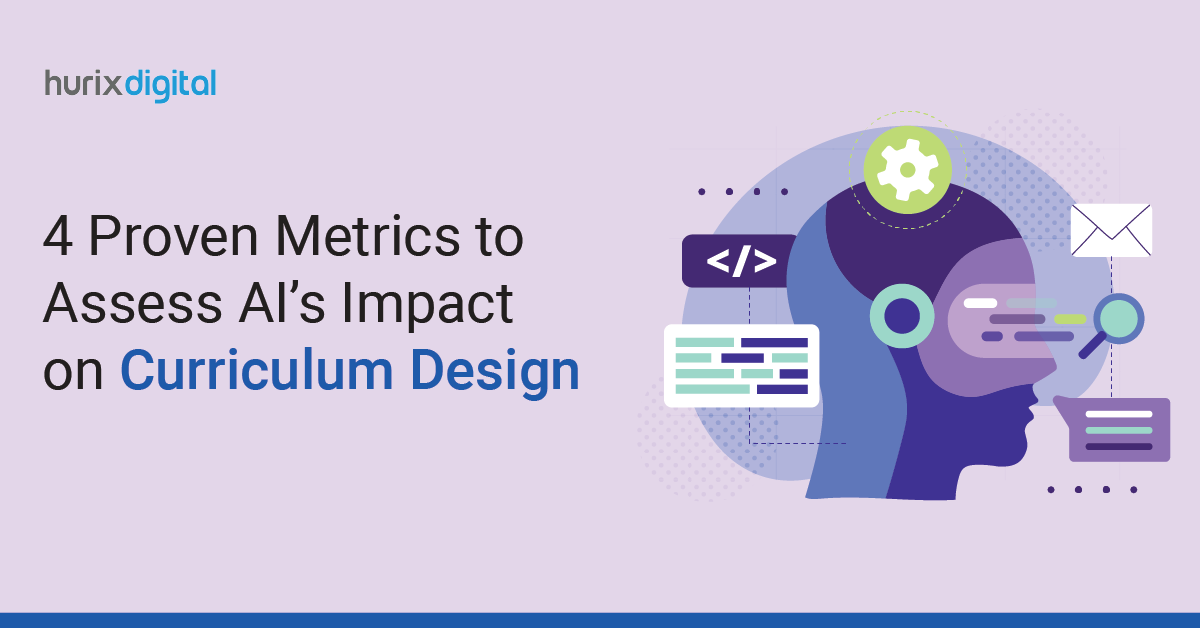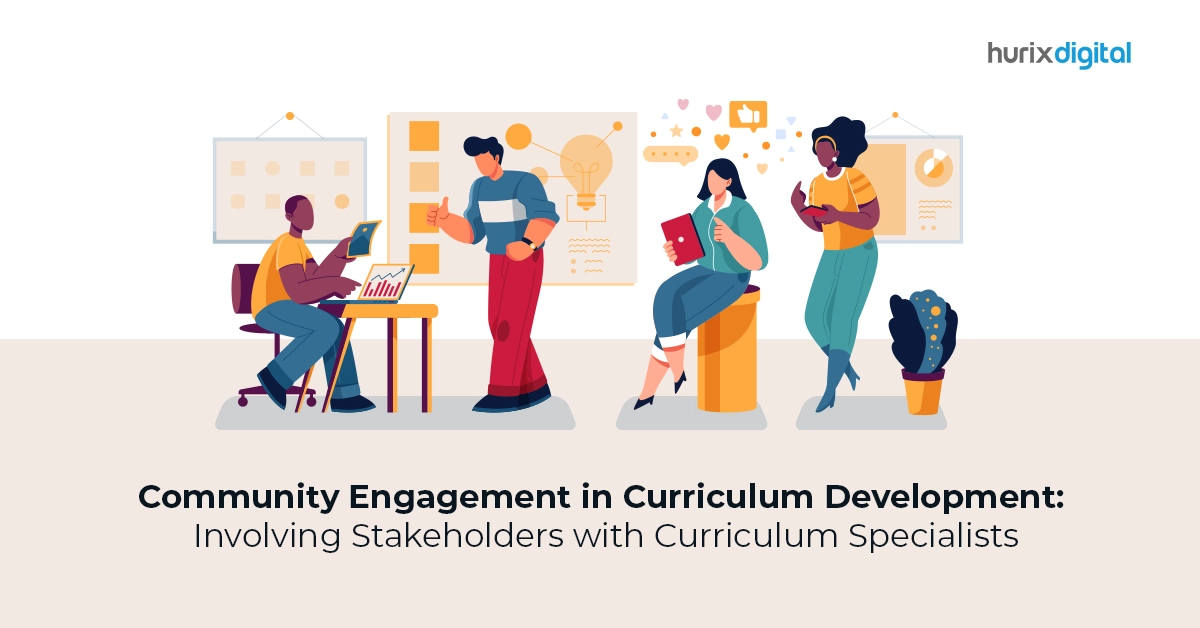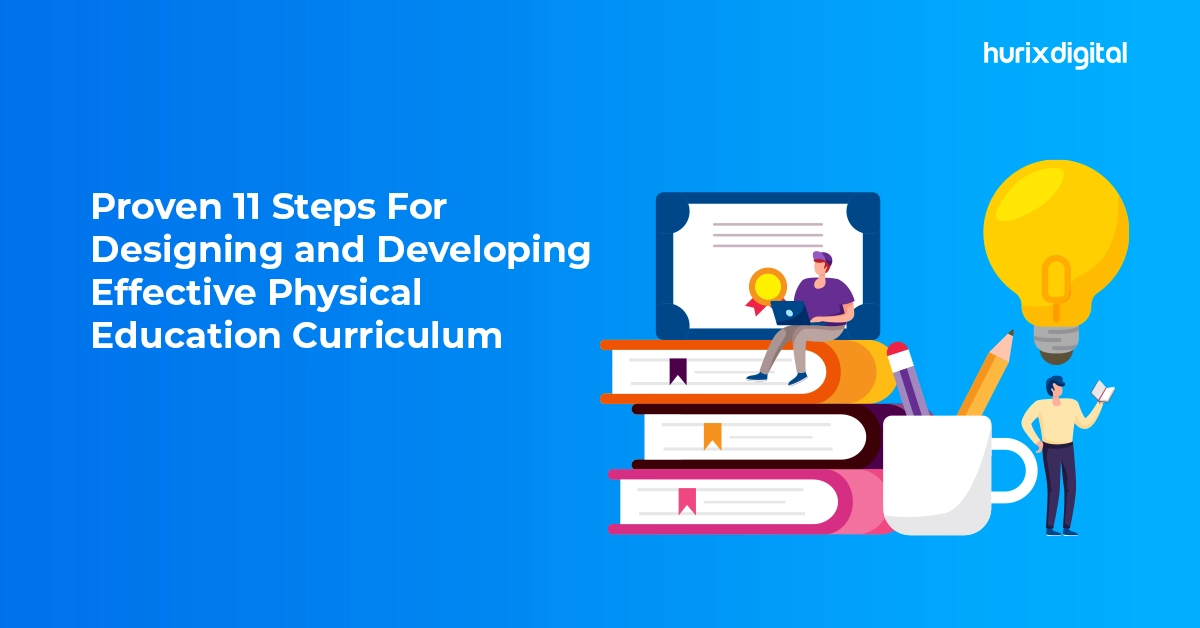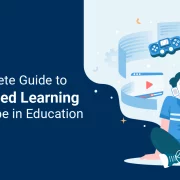
7 Steps Of Curriculum Design: How To Design Your Curriculum
Higher education as an industry is expected to amass a global value of $860.11 billion by 2030. What does that mean for students and teachers across the world?
Academic concepts, such as curriculum and eLearning design, will be at the forefront of the education industry. Curriculum design in education can be defined as a thinking process that explains how teachers want the students to learn.
The better the curriculum is designed, the easier it will be for students to learn. As the process boasts the utmost importance, every education institute must understand the process to create an efficient educational program design.
However, contemporary curriculum design needs to take into consideration additional factors. For instance, the number of mobile phone users globally is estimated to grow to 7.49 billion by 2025. Hence, the growth of mobile penetration demands that educational material must have a mobile-first approach to learning.
In this blog, we deconstruct curriculum design, the different types, and how to make the process relevant to the needs of today’s learners.
Table of Contents:
- Curriculum Design: What Should Be Your Focus?
- Different Types of Curriculum Design
- Why Devise a Curriculum Design?
- Steps in Curriculum Design
- 4 Pillars of Contemporary Curriculum Design
- In Conclusion
- Frequently Asked Questions (FAQs)
Curriculum Design: What Should Be Your Focus?
Curriculum design is a structured process used to arrange courses, create schedules, and design lesson plans. The end-to-end workflow involves coursework, educational analysis, and activities that lead to academic success.
Curriculum design also aims to meet and raise the school’s teaching standards.
Hence, the focus should remain on creating a seamless educational experience. Your learning environment should be adaptable and cater to your community. That is why these designs vary across the K12 curriculum.
Here is an overview of how curriculum designs are categorized.
Also Read: How Do Accessibility Audits Impact Student Retention Rates?
Different Types of Curriculum Design
There are three standard types of curriculum design:
- Subject-Centered Design
- Learner-Centered Design
- Problem-Centered Design
1. Subject-Centered Design
This type of educational program design focuses on specific subjects.
An ideal example for the category would be a maths curriculum design that covers the knowledge spread across the K12 curriculum. Such curriculums revolve around subjects instead of individuals.
2. Learner-Centered Design
As the name suggests, these curriculums cater to the goals, needs, and interests of every learner.
They revolve around the concept of every student being unique. Thus, this type of curriculum design in education empowers learners and shapes their academic journey via choices.
3. Problem-Centered Design
Such curriculums are niche and focus on real-world problems. They are used to teach students how to formulate their solutions to a unique problem.
Why Devise a Curriculum Design?
Even with new technologies simplifying higher education learning, teachers should invest time and resources in curating a curriculum design, and here is why:
- Better Engagement: Adding a learning game or group activity to the curriculum can encourage learners to be more engaging.
- Elevated Learning Space: An organized structure for learning leads to better efficiency in lesson plans.
- Learning Goals: A framework allows teachers to maintain focus on learning goals, at times, in an intuitive way.
- Track Progress: A curriculum design in education leads to effective tracking of students’ progress and skills.
Steps in Curriculum Design
Now that you understand the fundamentals of curriculum design, let’s see how they should be created:
Step 1: Set the Purpose
What is the need for your curriculum? What problems and issues are you targeting? What do your students need?
Ask such questions before trying to design your curriculum. This will help you scope the program effectively. Moreover, it will help you integrate the school’s guidelines, context, and educational policies by the government.
Step 2: Work on a Curriculum Map
It is always ideal to get a visual representation of your ideas. The same goes for curriculum design in education.
Add necessary details, such as deadlines, student progress, exams, and activities. Mapping the curriculum gives you an overview of what to do, exposing areas that need more work. You can even involve curriculum providers to get an expert assessment of the situation.
Tip: Create a student entitlement for better results. Also called pupil offer, a student entitlement should focus on broadening the curriculum. It can include enrichment experiences, such as extracurricular activities and educational visits.
Step 3: List the Intended Outcomes
Now, it is time to state the intended outcomes that a learner will gain by participating in curriculum design.
This section should include the defined outcomes, the components surrounding the outcomes, some examples, and an overview of learning tendencies.
Step 4: Arrange Curriculum Content
This is the meaty part of the process, as you will decide the whats, whens, and whys of teaching.
You will also select the subjects and concepts the curriculum will cover. How these aspects interconnect with other subjects should also be on your list. This will require a further breakdown of the components.
Thus, the content must be carefully structured, revamped, and designed.
Step 5: Set up the Curriculum Design Delivery
Now that the educational program design is taking form, you need to plan its delivery. This step will focus on picking learning styles, activity design worksheets, and different delivery modes.
Another crucial part of the step is to pick the right resources. Focus on using high-quality ad-hoc resources and equipment to keep the curriculum top-notch.
Step 6: Produce Curriculum Product
Once everything is finalized, the production of the curriculum material will take place. You should find suggestions from existing materials for better evaluation. During this step, you will also set up the assessment criteria to track the course’s growth.
Step 7: Assess, Adapt, and Improve
A process as complex as curriculum design might take some review and revamping.
In the final step, you ensure the sustenance of the educational program with regular reviewing. Make adaptations wherever needed, keep up with the latest policies and programs, find better methods, etc.
Keep the curriculum up-to-date with industry standards to ensure you are producing well-equipped learners.
4 Pillars of Contemporary Curriculum Design
Today’s learners comprise a wide range of audiences, and curriculum designers must keep diverse needs in mind. Here are four rules for inclusive, holistic curriculum design that can boost learning effectiveness:
1. Optimize for Accessibility
Curriculum designers must ensure that the content is optimized for accessibility for learners with diverse needs, including those with disabilities, learning limitations, and language barriers.
2. Optimize for Mobile Learning
The content must be optimized for mobile usage. For instance, the introduction of byte-sized multimedia resources enables micro-learning from one’s cell phone, even in low/ no connectivity areas.
3. Access to On-Demand Learning
Learners must have access to a wealth of on-demand learning resources, which nudges them towards self-learning, quicker absorption of concepts, and more opportunities to practice.
4. Design for Skill-building Opportunity
Skill-building is of growing importance to learners – from programming and design to social media management. Curriculum design must include modules that enable skill building. For example, the introduction of life-simulated environments helps nurture skills cost-effectively and comprehensively.
Also Read: A Comprehensive 7-Step Process to Design a Competency-Based Curriculum
In Conclusion
According to the World Economic Forum, education is an industry that will produce over 800 million K12 graduates by 2030. To keep up with this growth spurt, educational institutions will require an additional 1.5 million teachers annually.
However, the need for elevation won’t stop at human resources, with developing economies like Africa and Asia leading the expansion. It will require a redesign of technologies and concepts, such as curriculum design.
Since the process involves students’ academic learning, it requires vast knowledge and skills for impeccable execution. That is why names like Hurix help institutions curate their curriculum design with ease.
With 20 years of experience in assisting education technology companies, Hurix is one of the best global curriculum providers. Reach the experts today to curate your curriculum most efficiently.
Frequently Asked Questions (FAQs)
Q1. What is the significance of setting a purpose in curriculum design?
Setting a purpose in curriculum design helps define the objectives, target problems, and student needs, enabling effective scoping of the program and alignment with educational policies.
Q2. What is curriculum design in education, and why is it crucial?
Curriculum design is the process of structuring courses, schedules, and lesson plans to enhance the learning experience.
Q3. What is the primary focus of curriculum design?
The main focus of curriculum design is to structure courses, schedules, and lesson plans to create a seamless education experience.
Q4. How does curriculum design vary across different educational levels?
Curriculum designs vary across different educational levels (such as K12) to cater to the unique needs and requirements of each level’s community.
Q5. Why should teachers invest time in creating a curriculum design?
Teachers should invest time in curriculum design to enhance engagement, create an efficient learning space, maintain learning goals, and track students’ progress effectively.

Senior Vice President
A Business Development professional with >20 years of experience with strong capability to sell new solutions and develop new markets from scratch. New Market Entry Specialist with experience of working in two of the largest emerging markets – China & India. Also covered other key markets in APAC, US, EU & ME. Exceptional experience of conceptualizing, ideating and selling new learning technologies like VR AR, etc. across multiple industry verticals.







